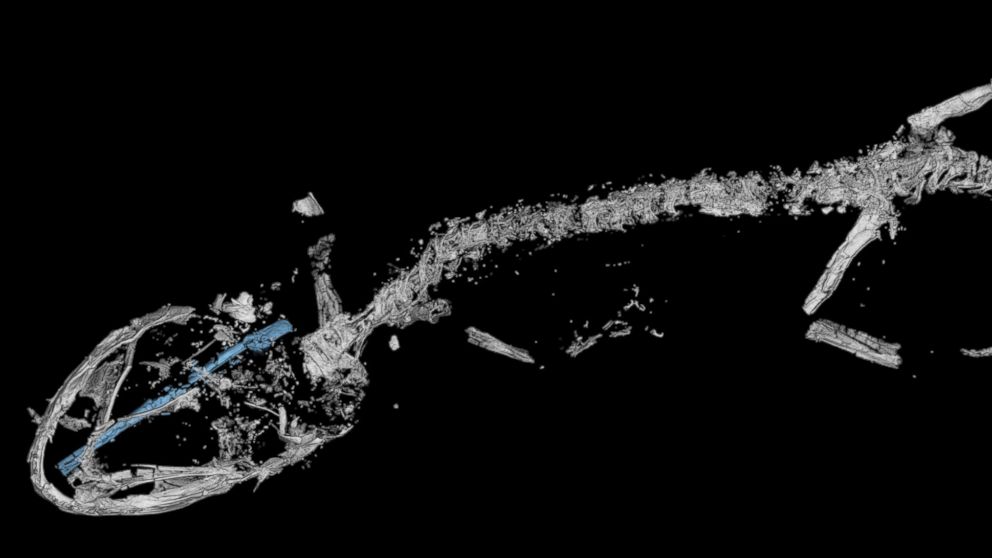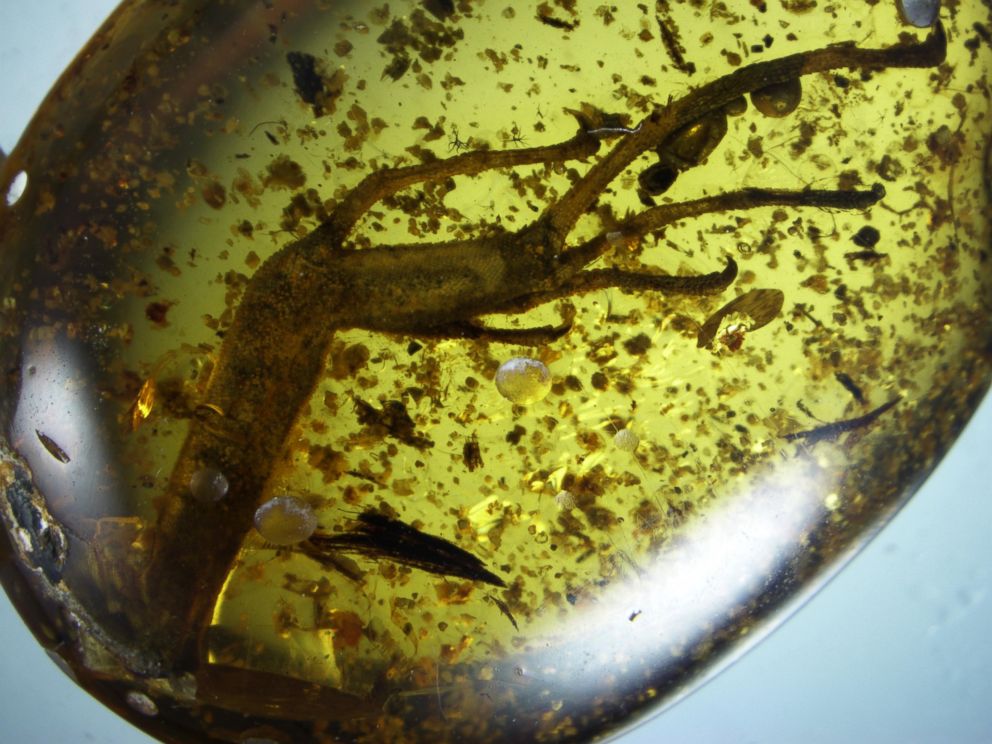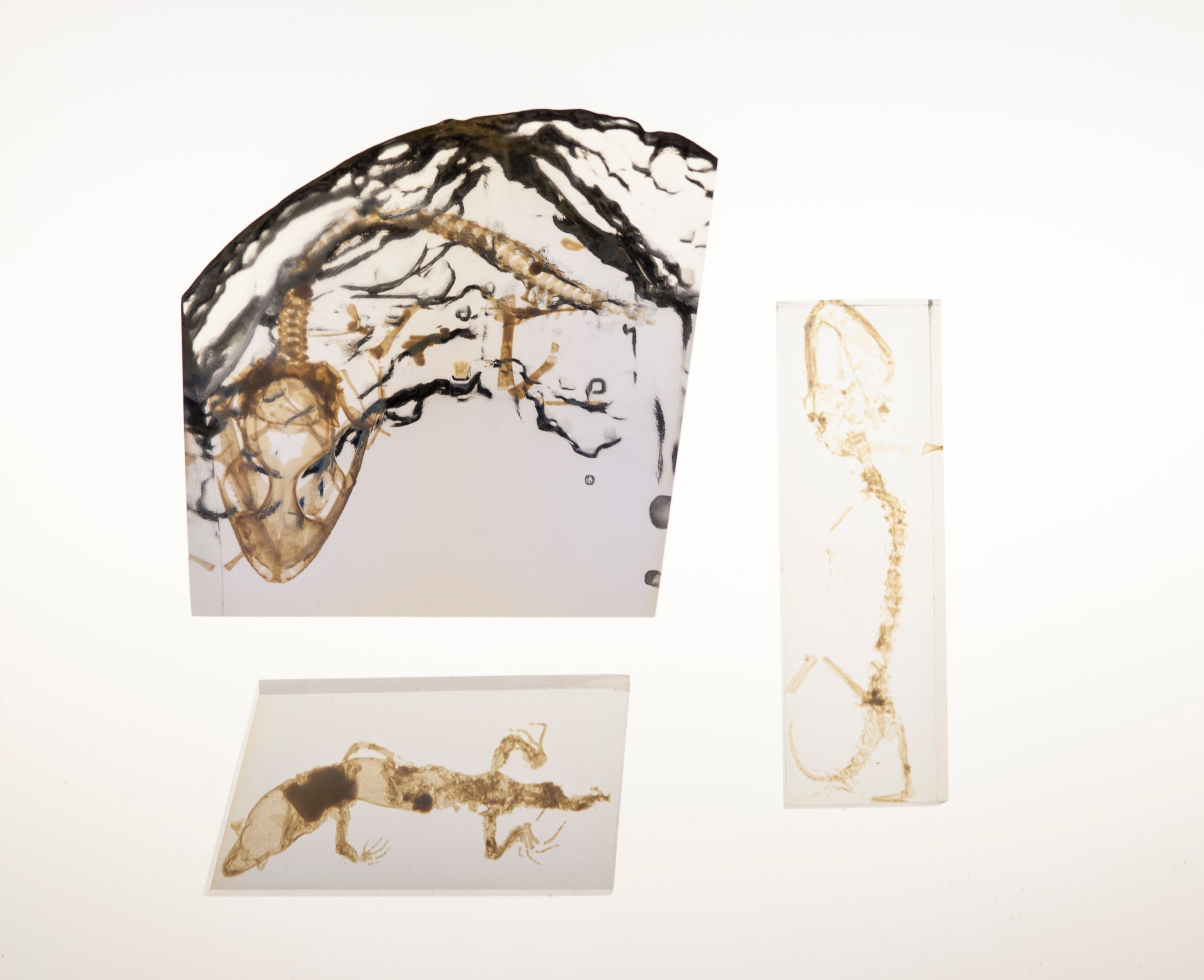Lizard Preserved in Amber Fossil Is Almost 100 Million Years Old
A team of scientists found the fossil of a nearly 100-million-year-old lizard.

— -- A team of scientists have found the fossil of a nearly 100 million-year-old tiny lizard, which could be the oldest chameleon ever found by a long shot – 78 million years.
Researchers found the well-preserved lizard while sifting through fossils at the American Museum of Natural History in New York that were made available by a private collector. They published their findings Friday in the journal Science Advances.
"We happened upon it really, honestly it was very surprising," said Edward Stanley, a herpetology researcher at the Florida Museum of Natural History who was part of the five-member research team. "Even more so, to find these animals as deep back in time as we’re finding them is truly remarkable."
The dime-size chameleon, which was originally found in Southeast Asia decades ago, is one of a dozen reptiles that were preserved in amber in what is now Myanmar. The lizards were likely caught in sticky tree resin, unable to tear free and instead preserved in almost pristine condition with bones, toe pads, teeth and even scales intact.
The chameleon fossils and the remains of 11 other lizards uncovered by the researchers are providing scientists with a peek into how lizards have evolved. The scientists said, for instance, that the age and location of the fossils challenge the previously held belief that chameleons originated in Africa.


"It was surprising to find those kind of lizards in that period," Stanley said.
While the fossils have been around for years, the breakthrough for researchers was the result of being able to precisely identify the type of lizards entombed in the amber by using advanced CT digital scanners.
"It was amazing at the quality of the various specimen and what we were not only able to see under the microscope but with other technology," said Stanley.




